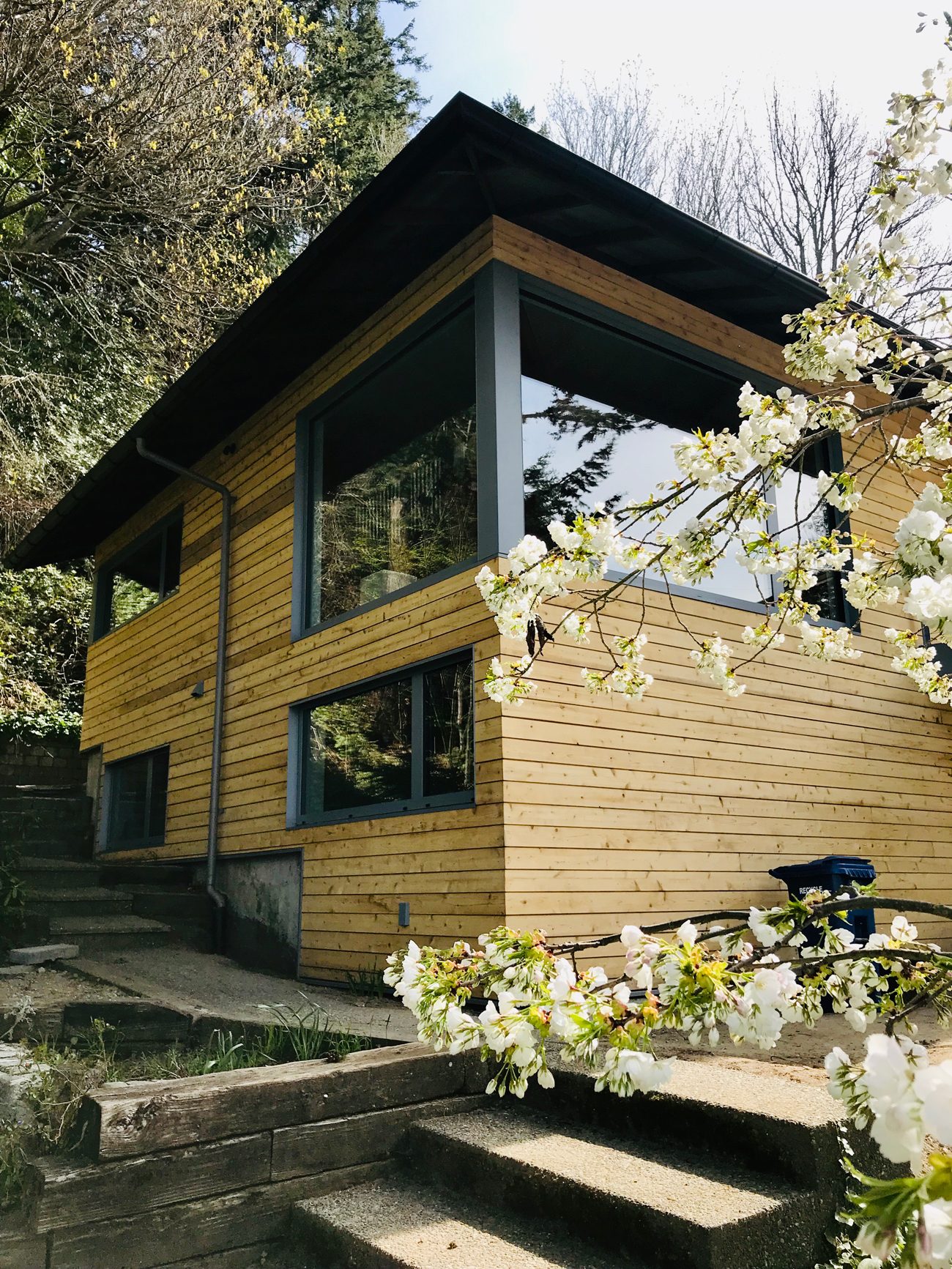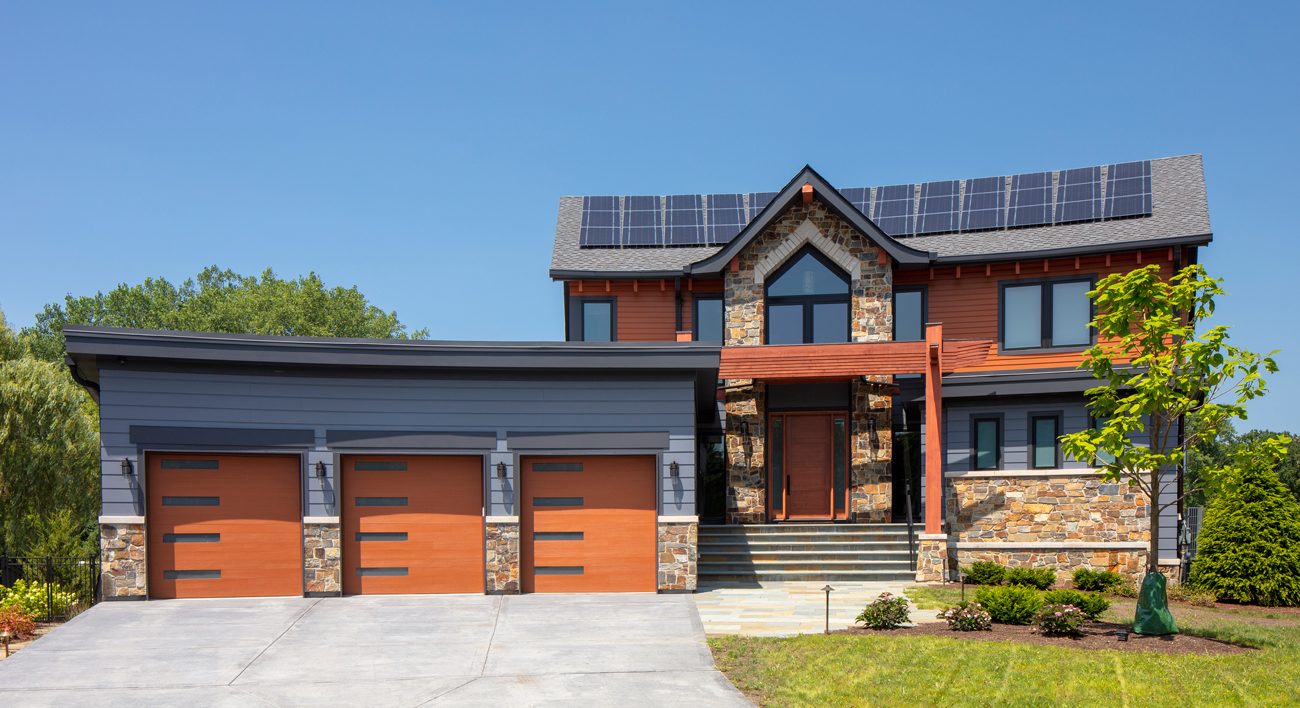How to Make a Home More Sustainable
The buzz in residential real estate is all about sustainability, and the good news is there are a plethora of ways to improve the efficiency and durability of a home.
Goals change; countertops fabricated from imported granite and showers lined with sprays that endlessly shoot water from head to toe are no longer at the top of all homeowners’ wish lists. Sustainable features are the latest trend to attract buyers. Houses marketed with low-flow toilets and showerheads, multipane windows, electric charging stations, and kitchen countertops made from locally quarried stone are what makes today’s home shoppers swoon.
According to the 2018 National Association of REALTORS® Sustainability Resource Guide, 61% of surveyed members said their clients are interested in sustainability and want more of these features in their homes—and it’s not just millennials requesting them. Almost every age group wants to save money, pare energy and water consumption, and remove toxins from the air they breathe. “Reducing utility bills is often the driver, but many also want to do the right thing,” says architect Tony Schmitz, sustainability director at Hoefer Wysocki, based in Leawood, Kan.
The good news is there are innumerable steps that homeowners can take, and the cost to act sustainably may be modest, adding an extra 5% to 10% to the purchase price, says Prentis Hale, principal at SHED Architecture + Design in Seattle, which has long practiced sustainability. One important caveat to remind clients is that a return on investment may not be immediate, and it hinges on both the cost to buy and install a product or system and the area’s climate.
Here are 10 tips real estate pros can use to advise their sustainable-conscious clients who are looking to purchase or update a home.
 © SHED
© SHED © Steffen Lehmann
© Steffen Lehmann- Insulation and heating. The first step a homeowner should take before making changes to a home is to have an energy audit conducted to gauge the efficiency of the home’s systems, says architect Nathan Kipnis, founder of Kipnis Architecture + Planning in Evanston, Ill. The next steps, based on the audit, would likely be to air seal the house by caulking gaps around windows, doors, and recessed lights. Poorly insulated windows should be replaced with multipane windows. Next up should be improving wall, attic, and basement insulation, based on the R value for the homeowner’s area, Kipnis says. Any home built before 1990 should have an updated heating and cooling system, says Schmitz. Kipnis likes a geothermal ground source heat or air source heat pump, both of which are electric and help to minimize carbon from a building’s energy use. A tight home in a cold climate also should have a heat recovery ventilator to bring in fresh air to keep the home healthy, Kipnis says. A programmable smart thermostat like a Nest is useful to save more energy since it learns a homeowner’s patterns and lowers temperatures when they are away.
 © SHED
© SHED © AJ Brown / Nathan Kipnis, architect, Kipnis Architecture + Planning
© AJ Brown / Nathan Kipnis, architect, Kipnis Architecture + Planning © Ellumi
© Ellumi- Plumbing. Whether it’s a house with many bathrooms or many occupants, water figuratively and literally goes down the drain when people flush toilets, shower, wash dishes, or run the dishwasher frequently. Smart choices include low-flow toilets and showerheads, faucets with aerators, and front-loading washing machines. Schmitz likes tankless water heaters because they heat water on demand rather than continuously, but they require a gas source. Some utility companies offer rebates or incentives when homeowners buy water-saving appliances, so it’s wise for owners look for the EPA WaterSense label or Energy Star certification. Some utilities also offer smart meters and other systems so homeowners can program appliances to start at the least expensive time to use energy, according to the U.S. Department of Energy.
- Nontoxic, natural materials. Air quality also affects sustainability, so it’s smart to make choices that limit volatile organic compounds in paint, carpeting, and adhesives, says Schmitz. When possible, homeowners should also go for natural materials in the home, such as all-wool carpeting, quartz, and reclaimed wood.
- Transportation and walkability. Sustainability isn’t just about a person’s home but also what vehicles they drive and how often they use them. Charging stations have already become a hot amenity in housing, Hale says. But the more a homeowner can walk, bicycle, or take public transportation, the better, says Kipnis. Housing demand is only expected to increase in walkable areas, in both cities and suburbs, according the report Foot Traffic Ahead 2019, from the George Washington University School of Business and Smart Growth America.
- Recycle. Some states offer benefits to homeowners and developers who recycle construction materials during a remodel or teardown, says Kipnis. His state of Illinois is among those that have a deconstruction program in place, offering potential tax benefits associated with donation, revenue from material resale, and reduced waste management costs. There are also private companies that specialize in deconstruction and donation of building materials, such as Recyclean Inc. in Kenosha, Wis. Kipnis cautions that some materials are more recyclable than others (such as glass and metal versus concrete), and some materials are not recyclable if their materials are bound together, including certain countertops that mix aggregates, he says.
Educating the Multifamily Market
Single-family homeowners aren’t the only clients who are interested in sustainability and how to improve a property. Multifamily and commercial building owners are also considering sustainability—and many cities are insisting that the owners of buildings within their borders make improvements to decrease energy use.
For example, New York City began requiring owners of 50,000-square-foot and larger buildings to benchmark their energy use in 2012, and in 2016, broadened the requirement to include 25,000-square-foot buildings and up. This past spring, the city took it a step further by passing the Climate Mobilization Act, making it the first in the nation to put structures of more than 25,000 square feet on notice—come 2024, owners will have to pay a fine if they go over their allotted greenhouse gas emissions set for the building. The caps are determined according to occupancy classification (multifamily, retail, parking, etc.) and the buildings’ square footage for each of those areas.
“The goal for buildings of 25,000 square feet and larger is to reduce energy consumption,” says Kelly Dougherty, director of energy management at FirstService Energy, a subsidiary of FirstService Residential Property Management Company, which has an office in New York. As a result, many owners are making changes to lighting and HVAC systems and shifting to natural gas or electricity versus fossil fuels, says Dougherty, whose company manages a portfolio of 500 apartment buildings in the city, from affordable to super-luxury. She expects other cities will institute similar policies in the coming years.
Going off the Grid
While the overall goal of sustainability is lowering energy consumption and a building’s carbon footprint, some owners are going further by going off the grid completely. In fact, getting off the power grid is becoming easier for homeowners when they select systems such as solar panels with battery storage that help them to produce more energy than they use in a year. In some areas of the country, energy codes have gotten so strict that new houses or substantial remodels must get close to net-zero energy status, says architect Prentis Hale. However, it’s still not realistic for most homeowners to get off the grid completely, says architect Tony Schmitz, especially when it comes to water and sewer grids—cities usually won’t let homeowners disconnect from those due to local health codes.

© Mark Woods for SHED
Nick Rosen, author of Off the Grid: Inside the Movement for More Spaces, Less Government, and True Independence in Modern America (Penguin Publishing), calls himself “a part-time off-gridder.” He has a home in London, but he has taken his small house on the island of Majorca in Spain off the grid completely. He’s outfitted the property with solar panels and a rain collection system. His advice for others wanting to do the same is to over provide if budget permits. “Put in a larger water tank than you think you will need, add more solar panels than are strictly necessary, and give yourself a few extra batteries,” he says. “Also, get together with other people in the area who are off-grid. No one person has all the skills and resources.”
3 Critical Steps for Homeowners Eager to Learn About Sustainability
1. Recognize that the most sustainable building is usually the one that exists (depending on condition). “Homeowners should try to reuse and improve an existing home rather than start over,” says architect Steffen Lehmann.
2. Heed those long-touted, simple conservation tips: turn off the lights, don’t let water run endlessly while brushing teeth or showering, and unplug small appliances and turn off the TV when not in use.
3. When a client is considering building new or taking on a major home renovation, advise them to hire professionals who are skilled and knowledgeable in sustainable design. “When interviewing [builders], the homeowners should ask if the person makes sustainable choices when selecting materials, systems, and construction methods,” says architect Tony Schmitz. Look at their website to see if sustainability is a focus. Just as important as what goes into a house is what builders do with waste. What goes into a landfill should be limited, says Marc Spiegel, co-founder and head of construction and demolition for Rubicon Global in Atlanta.


No comments:
Post a Comment